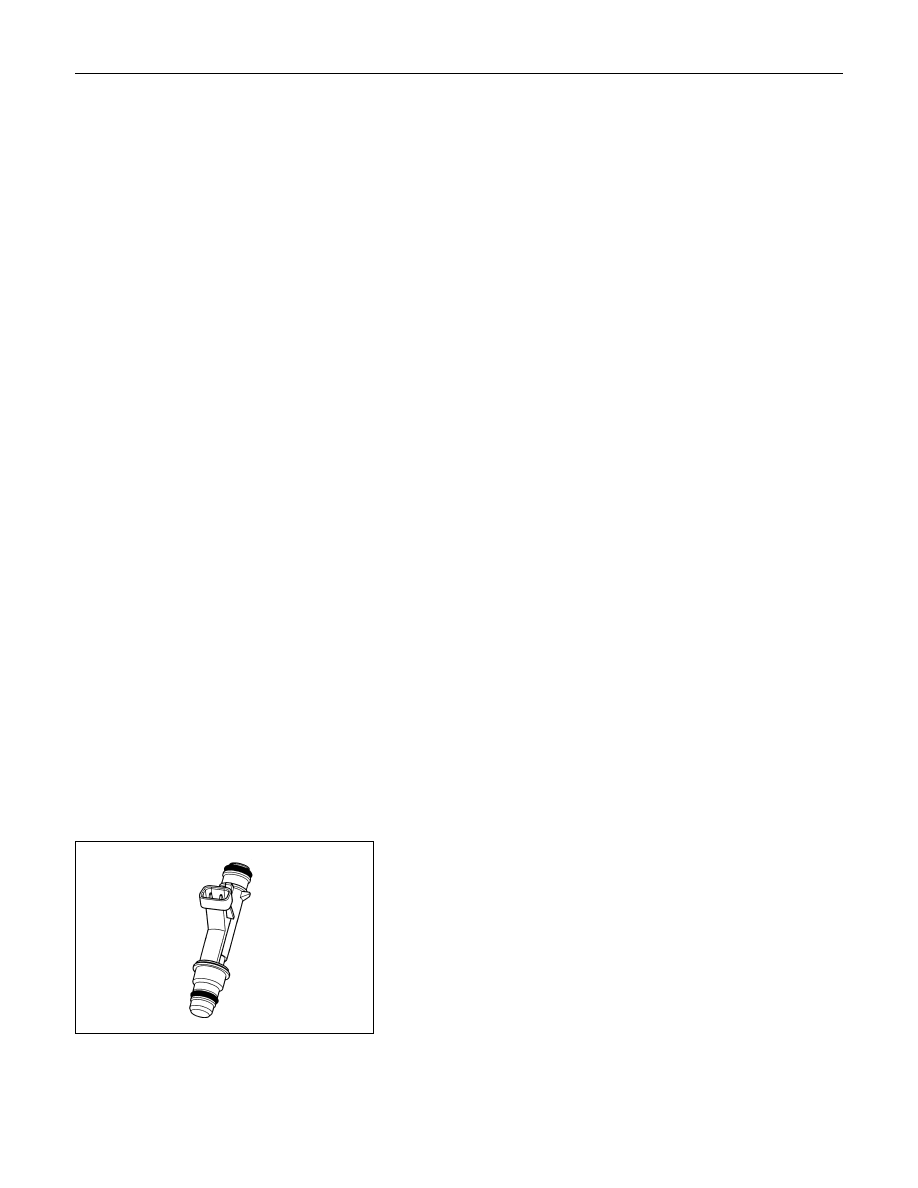Isuzu engine C22NE / 22LE / 20LE. Manual - part 116

DRIVEABILITY AND EMISSIONS 6E1-293
BATTERY VOLTAGE CORRECTION MODE
When battery voltage is low, the ECM will compensate for the
weak spark by increasing the following:
• The amount of fuel delivered.
• The idle RPM.
CLEAR FLOOD MODE
Clear a flooded engine by pushing the accelerator pedal down
all the way. The ECM then de-energizes the fuel injectors. The
ECM holds the fuel injectors de-energized as long as the
throttle remains above 75% and the engine speed is below 800
RPM. If the throttle position becomes less than 75%, the ECM
again begins to pulse the injectors ON and OFF, allowing fuel
into the cylinders.
DECELERATION FUEL CUTOFF (DFCO) MODE
The ECM reduces the amount of fuel injected when it detects a
decrease in the throttle position and the air flow. When
deceleration is very fast, the ECM may cut off fuel completely.
Until enable conditions meet the engine revolution less 1000
rpm or manifold absolute pressure less than 10 kpa.
ENGINE SPEED/VEHICLE SPEED/
FUEL DISABLE MODE
The ECM monitors engine speed. It turns off the fuel injectors
when the engine speed increases above 6000 RPM. The fuel
injectors are turned back on when engine speed decreases
below 3500 RPM.
FUEL CUTOFF MODE
No fuel is delivered by the fuel injectors when the ignition is
OFF. This prevents engine run-on. In addition, the ECM
suspends fuel delivery if no reference pulses are detected
(engine not running) to prevent engine flooding.
FUEL INJECTOR
The group fuel injection fuel injector is a solenoid-operated
device controlled by the ECM. The ECM energizes the
solenoid, which opens a valve to allow fuel delivery.
The fuel is injected under pressure in a conical spray pattern at
the opening of the intake valve. Excess fuel not used by the
injectors passes through the fuel pressure regulator before
being returned to the fuel tank.
A fuel injector which is stuck partly open will cause a loss of
fuel pressure after engine shut down, causing long crank times.